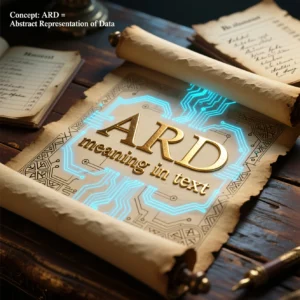In today’s fast-paced digital world, abbreviations and acronyms are everywhere. They save time, make communication quicker, and often add a layer of informality to our conversations.
One such abbreviation you’ve likely come across is TBD. But what does it mean, and why is it so widely used? Whether you’re texting a friend, scrolling through social media, or navigating professional emails, understanding TBD is essential.
This guide will break down everything you need to know about TBD, from its definition and history to its usage in various contexts and how to respond to it.
What Does TBD Mean?
TBD stands for “To Be Determined” or “To Be Decided.” It’s a placeholder used when something hasn’t been finalized or decided yet. Think of it as a way to say, “We’ll figure this out later.”
Real-Life Examples of TBD
- Texting:
Friend 1: “What time are we meeting for dinner?”
Friend 2: “TBD, I’ll let you know after work.” - Professional Setting:
Manager: “The deadline for the project is TBD until we get client approval.” - Social Media:
Post: “Excited to announce our next event! Date and location: TBD.”
In each of these examples, TBD is used to communicate that the details are still up in the air.
The Origins and Evolution of TBD
The abbreviation TBD has been around for decades, originating in formal writing and planning contexts. It was commonly used in project management, event planning, and administrative documents to indicate that certain details were pending. Over time, as digital communication became more prevalent, TBD found its way into everyday conversations.
Today, TBD is used across various platforms, from casual texting to professional emails. Its flexibility and simplicity have made it a go-to abbreviation for indicating uncertainty or pending decisions.
How TBD Is Used in Different Contexts
Texting and Casual Conversations
In texting, TBD is often used to keep plans flexible. For example:
Friend 1: “Are we still on for the movie tonight?”
Friend 2: “Yeah, but the time is TBD. I’ll text you later.”
Social Media
On platforms like Twitter or Instagram, TBD is used to generate excitement while keeping details under wraps. For instance:
Post: “Big news coming soon! Release date: TBD. Stay tuned!”
Gaming
In gaming communities, TBD (sometimes written as TBD) is used to indicate that a match or event time hasn’t been set yet.
Gamer 1: “When’s the next tournament?”
Gamer 2: “TBD, but it’s gonna be epic!”
Professional Settings
In the workplace, TBD is often used in emails or project plans to indicate that a decision or detail is pending.
Email: “The budget for Q4 is TBD until we finalize the client contract.”
Common Misconceptions About TBD
One common misconception is that TBD means “To Be Discussed.” While this interpretation makes sense in some contexts, the correct meaning is “To Be Determined” or “To Be Decided.” Another misunderstanding is that TBD is only used in formal settings. In reality, it’s just as common in casual conversations.
Similar Terms and Alternatives
Here are some alternatives to TBD and how they compare:
| Term | Meaning | Context |
| TBA | To Be Announced | Used when details will be revealed later. |
| TBC | To Be Confirmed | Used when details need final approval. |
| Pending | Awaiting a decision | Formal, often used in professional settings. |
| Undecided | Not yet decided | Casual, used in everyday conversations. |
How to Respond to TBD
Casual Response
Friend: “The party time is TBD.”
You: “No worries, just let me know!”
Funny Response
Friend: “Dinner plans are TBD.”
You: “Cool, I’ll just starve until further notice.”
Professional Response
Colleague: “The meeting time is TBD.”
You: “Understood. Please keep me updated.”
Regional and Cultural Differences
TBD is widely understood in English-speaking countries, but its usage may vary slightly. For example, in British English, TBC (To Be Confirmed) is more commonly used in formal contexts. In other languages, similar abbreviations exist, such as à déterminer in French or por determinar in Spanish.
TBD in Online Communities and Dating Apps
On platforms like Tinder or Twitter, TBD is often used to keep plans open-ended. For example:
Tinder Match: “We should meet up sometime!”
You: “Sure, when and where?”
Match: “TBD, but I’m thinking coffee.”
In gaming communities, TBD is used to indicate that match times or events are still being planned.
Hidden or Offensive Meanings
Fortunately, TBD doesn’t have any hidden or offensive meanings. However, tone and context matter. Using TBD in a professional email is fine, but overusing it in casual conversations might come across as non-committal.
Is TBD Suitable for Professional Communication?
Yes, TBD is appropriate in professional settings, especially when discussing pending decisions or details. However, in formal documents, it’s better to use full phrases like “To Be Determined” for clarity.
FAQs
- What does TBD stand for?
It stands for “To Be Determined” or “To Be Decided.” - Is TBD formal or informal?
It can be used in both formal and informal contexts. - Can TBD mean “To Be Discussed”?
No, the correct meaning is “To Be Determined” or “To Be Decided.” - Is TBD used in other languages?
Yes, similar abbreviations exist in other languages. - How do I respond to TBD?
You can respond casually, professionally, or humorously, depending on the context.
Conclusion
TBD is a versatile and widely-used abbreviation that helps us communicate uncertainty or pending decisions. Whether you’re texting a friend, posting on social media, or drafting a professional email, understanding TBD is crucial. By now, you should feel confident using and responding to TBD in any context. So, the next time you see TBD, you’ll know exactly what it means—and what to do about it!


